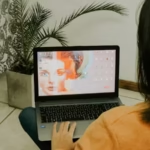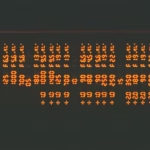In the ever-shifting terrain of internet culture, music production, and underground creative archives, few keywords trigger as much curiosity and debate as zdot-flavad_zip. For those asking the obvious and increasingly urgent question, “What is zdot-flavad_zip?” the answer is as layered as it is elusive: zdot-flavad_zip is a hybrid term used in digital subcultures to signify a compressed file or creative data package associated with the raw, often unfiltered essence of underground sound, glitch aesthetics, and artistic dissent.
More than just a filename or cryptic reference, zdot-flava-d_zip has become symbolic shorthand in some online communities for an ethos of DIY innovation, cultural remixing, and the push against platform homogenization. It is part term, part texture, part protest—a kind of digital graffiti tag sprayed across a download link.
To understand it is not to simply unpack a ZIP file. It is to understand the dynamics of authorship, decentralization, and the new language of underground culture in a media ecosystem that increasingly prioritizes visibility over substance.
Breaking Down the Term: What Does “Zdot-Flavad_Zip” Mean?
On a linguistic level, “zdot” is often a stylized reference to file extensions (e.g., .zip, .wav, .mp3), while “flavad” may stem from slang meaning something that carries flavor, essence, or authenticity. The suffix “_zip” clearly refers to a compressed archive—a bundle of digital material.
Put together, zdot-flava-d_zip can be interpreted as “a compressed artifact carrying a uniquely flavored essence, formatted for digital distribution.”
But this interpretation barely scratches the surface. Within certain music circles—particularly grime, digital hip hop, glitchwave, and netlabel collectives—zdot-flavad_zip is a recognized motif. It represents a digital artifact that resists polish and packaging. Instead of aligning with corporate sonic templates or mainstream branding, the content inside is often raw, experimental, and unconcerned with mass appeal.
Where It Emerged: Digital Subcultures and Shadow Archives
Though zdot-flavad_zip is not tied to a single source, its cultural DNA spans underground producer forums, peer-to-peer (P2P) exchange networks, early SoundCloud-era drop links, and private Discord or IRC channels where bootlegs, beat tapes, and visual fragments are shared.
These aren’t public-facing platforms with clean interfaces and content strategies. These are liminal zones of digital creativity: messy, brilliant, and ephemeral. Files marked as zdot-flavad_zip are often:
- Unofficial project bundles from anonymous or pseudonymous artists
- Collections of beats, vocal chops, or stems not meant for wide release
- Visually stylized with glitch art, ASCII covers, or data corruption aesthetics
In many ways, zdot-flavad_zip signals participation in a shadow archive—an informal, often undocumented distribution method that reflects the values of its creators: freedom, experimentation, and anti-corporate independence.
Zdot-Flavad_Zip as an Aesthetic Code
The aesthetics surrounding zdot-flavad_zip aren’t incidental. They matter deeply. The visual language often includes low-res visuals, broken fonts, pixel art, grain overlays, and subverted UI elements. The point is not nostalgia, but reclamation: taking digital decay and making it a badge of creative defiance.
In this context, the “.zip” extension is less about compression and more about compression as metaphor. Inside a .zip file lies content that is densely packed, coded with meaning, waiting to be expanded by someone who knows how to unpack it—a form of encrypted solidarity.
Beyond Music: A New Kind of Digital Folklore
While its origin may lie in underground music production, zdot-flavad_zip is increasingly referenced in broader creative and academic circles. Experimental writers, digital artists, and even net theorists are using it as a framework to discuss:
- Data authenticity
- Digital residue
- Folk practices of the internet
In these conversations, zdot-flavad_zip functions almost like a zine or a mixtape from another era: a self-contained moment, a cultural timestamp that resists being cleanly archived or monetized. It is transient by design.
The Ethics of Distribution
Because zdot-flavad_zip often contains material not cleared for commercial use—samples, remixes, unauthorized edits—it challenges traditional intellectual property norms. But this isn’t piracy for profit. It’s a form of creative bootlegging rooted in remix culture and post-capitalist critique.
This presents ethical questions: Should these files circulate? Who owns remix aesthetics? Can there be communal digital property in an age of surveillance and commodification?
For many creators, zdot-flavad_zip is less about violating law than reclaiming space. It’s a return to an older internet where creativity thrived outside commercial terms of service.
Zdot-Flavad_Zip as Metadata Rebellion
There’s also a deeper rebellion at play: against metadata tyranny. In an era where digital platforms demand tagging, optimization, and algorithmic classification, zdot-flavad_zip offers no such clarity. It rarely shows up in search rankings. It dodges recommendation systems. It is, by nature, unfindable unless you know where to look.
In this way, it challenges the platform logic that has dominated creative discovery since the 2010s. It reminds users that meaning can still be forged in spaces where metrics don’t matter.
Communities of Practice: Who Uses Zdot-Flavad_Zip?
You’re unlikely to see zdot-flavad_zip trending on X or topping Spotify charts. Instead, its users operate in micro-nodes of activity:
- Independent producers in Cape Town and Jakarta
- Art school collectives in Berlin and Toronto
- Glitch artists in Tokyo and São Paulo
- Queer and trans creators using anonymity as armor
These communities are bonded not by aesthetic unity, but by a shared resistance to digital flattening. They treat the internet as a sandbox, not a sales funnel.
Educational Potential: Teaching with Zdot-Flavad_Zip
Some experimental educators have started using zdot-flavad_zip bundles in media literacy courses. These zip files become exercises in:
- Reverse engineering media objects
- Tracing authorship through pseudonymity
- Understanding underground cultural economies
Students are encouraged to unpack the files, annotate the contents, and map their creative provenance. In doing so, they learn not just about media, but about the politics of visibility and the artistry of concealment.
Risk and Preservation
The very nature of zdot-flavad_zip—its ephemerality, anonymity, and informal circulation—makes it fragile. These artifacts disappear quickly: deleted cloud folders, expired links, abandoned usernames.
Archiving them poses technical and ethical dilemmas. How do you preserve a thing not meant to be saved? Can you document culture without compromising it?
Some digital anthropologists suggest that the act of unpacking is itself the archive. That once opened, explored, and shared, the file has fulfilled its purpose.
The Commercial Counterpoint
Interestingly, some brands have tried to appropriate the zdot-flavad_zip aesthetic. Capsule clothing drops, digital collectibles, and marketing campaigns now mimic its rough visuals and pseudonymous energy. But the community often recognizes the difference between signal and simulation.
Authentic zdot-flavad_zip materials don’t ask for your attention. They emerge organically. If you have to advertise it, it probably isn’t it.
Why It Matters Now
As mainstream platforms consolidate and monetize nearly every form of creative output, keywords like zdot-flavad_zip remind us that there are still corners of the internet where creativity is shared, not sold. Where identity is fluid, not performative. Where meaning is encoded, not algorithmically unpacked.
In this moment of cultural exhaustion, zdot-flavad_zip represents both artifact and attitude. It says: We were here. We made this. And if you know, you know.
Final Reflections: A File, A Feeling
In its simplest form, zdot-flavad_zip is a compressed folder.
But in its fullest expression, it is a digital whisper. A cultural afterimage. A refusal to be easy.
It’s what happens when creativity refuses to optimize itself. When artists choose complexity over clarity. When communities prioritize real connection over reach.
Zdot-flavad_zip is not a brand. It’s not a trend. It’s a quiet archive of those who create not for likes, but for legacy.
And maybe, in a world defined by exposure, the most radical act is still: to make something and share it only with those who can truly see it.
Read: Understanding “Cent Gewes”: The Cultural and Linguistic Depth Behind a Curious Term
FAQs
1. What is zdot-flavad_zip?
Zdot-flavad_zip is a symbolic, often pseudonymous term referring to compressed digital files used in underground creative communities to share experimental music, art, or data artifacts. It embodies raw expression, anonymity, and resistance to platform-driven culture.
2. Where did zdot-flavad_zip originate?
It emerged within underground digital subcultures—particularly among beatmakers, glitch artists, and online collectives—who distribute unpolished work outside mainstream platforms, often through peer-to-peer links, private servers, or encrypted channels.
3. What kind of content is typically found in a zdot-flavad_zip file?
These files often contain beat tapes, unreleased music stems, visual fragments, experimental audio edits, or multimedia collages. The contents are unfiltered, non-commercial, and frequently layered with glitch or lo-fi aesthetics.
4. Is downloading or sharing zdot-flavad_zip content legal?
Not always. Some files include uncleared samples or remix work, making them legally ambiguous. However, they are typically circulated within closed communities for cultural exchange rather than profit.
5. Why is zdot-flavad_zip important in today’s digital culture?
It represents a form of digital folk art—resisting commercialization, metadata standardization, and algorithmic visibility. It preserves creative autonomy and nurtures micro-communities that value authenticity over virality.











